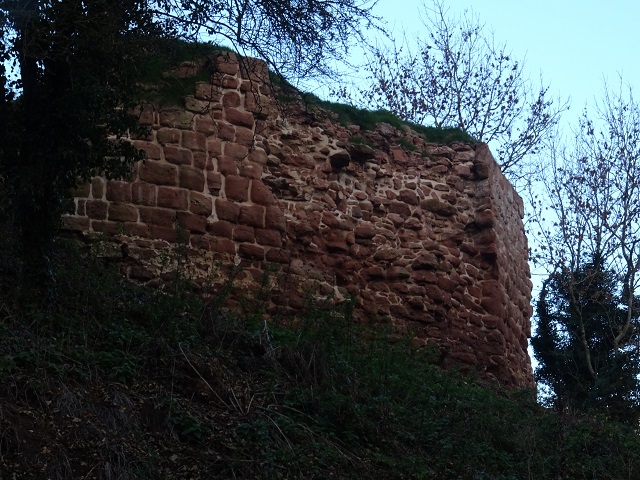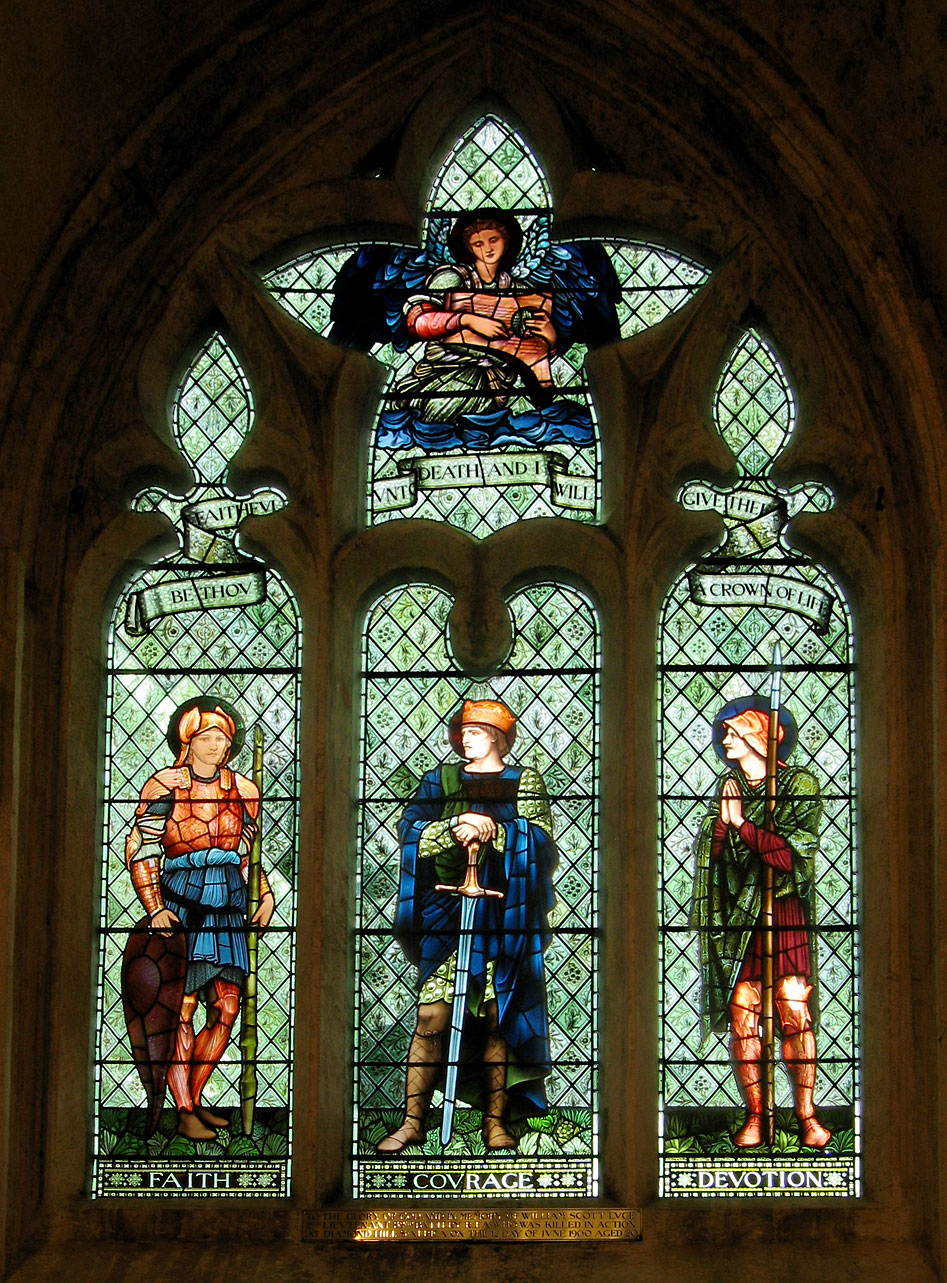|
All Saints' Church, Madeley
All Saints' Church is an Anglican church in Madeley, Staffordshire, England, and in the Diocese of Lichfield. The building dates mostly from the 14th and 15th centuries, and the chancel was rebuilt in the 19th century. It is Grade I listed. Description A church on the site is first recorded in the late 10th century. The earliest surviving part of the church, the arcade on the north side of the nave, dates from the late 12th century. The wide, pointed chancel arch is early 13th century, and the north aisle is of the 14th century. There are north and south transepts (unusual in a small parish church) dating from the 15th century; also of the 15th century are the north chancel chapel (now a vestry), the clerestory, and the tower."About us" All Saints' Church Madeley. ''A church near you''. Retrieved 6 July 2022. Monuments |
Madeley, Staffordshire
Madeley is a village and ward in the Borough of Newcastle-under-Lyme, North Staffordshire, England. It is split into three parts: Madeley, Middle Madeley, and Little Madeley. Madeley Heath is also considered by many to be part of Madeley. In the 2001 census, the population was recorded as 4,386, decreasing to 4,222 at the 2011 Census. Geography Madeley is located west of Newcastle-under-Lyme town centre and is close to the Shropshire and Cheshire borders. To the north are the villages of Betley and Wrinehill. South is the hamlet of Baldwin's Gate. To the east is Keele, the site of Keele University as well as Silverdale, whilst to the west lies Onneley and Woore. History Madeley is derived from the Saxon, Madanlieg, meaning 'a clearing in the woods belonging to Mada' (Mada is a female Saxon name). Madeley is recorded in the Domesday Book as being of wood and 4 plough teams. The first Madeley Old Manor was built by Robert de Stafford, with the local church being ... [...More Info...] [...Related Items...] OR: [Wikipedia] [Google] [Baidu] |
Charles Lynam
Charles Lynam (9 February 1829 – 21 February 1921) was an English architect, designing many public buildings and churches in the Stoke-on-Trent area. He was also a church historian, archaeologist, and preservationist. Life Lynam was born in Colwich, Staffordshire, son of George and Hannah Lynam, and was educated at Christ's Hospital School in London. After being articled with a London architect he joined his father's architectural practice in Stoke-upon-Trent, and in 1853 became a partner of the firm. His father died later that year.Charles Lynam thepotteries.org. Retrieved 30 August 2018.Charles Lynam Exploring the ... [...More Info...] [...Related Items...] OR: [Wikipedia] [Google] [Baidu] |
Grade I Listed Churches In Staffordshire
Staffordshire is a county in the West Midlands region of England. In 1974 the historical county of Staffordshire was combined with the unitary authority of Stoke-on-Trent to form the ceremonial county of Staffordshire. In England, buildings are given listed building status by the Secretary of State for Culture, Media and Sport, acting on the recommendation of English Heritage. This gives the structure national recognition and protection against alteration or demolition without authorisation. Grade I listed buildings are defined as being of "exceptional interest, sometimes considered to be internationally important"; only 2.5 per cent of listed buildings are included in this grade. This is a complete list of Grade I listed churches and chapels in Staffordshire as recorded in the ''National Heritage List for England''. Christian churches have existed in Staffordshire since the Anglo-Saxon era, but few Saxon features remain in its Grade I listed churches. The church ... [...More Info...] [...Related Items...] OR: [Wikipedia] [Google] [Baidu] |
Listed Buildings In Madeley, Staffordshire
Madeley is a civil parish in the district of Newcastle-under-Lyme, Staffordshire, England. It contains 38 listed buildings that are recorded in the National Heritage List for England. Of these, one is listed at Grade I, the highest of the three grades, one is at Grade II*, the middle grade, and the others are at Grade II, the lowest grade. The parish contains the villages of Madeley and Onneley and the surrounding countryside. Most of the listed buildings are houses and associated structures, cottages, farmhouses and farm buildings. The other listed buildings include a church, monuments in the churchyard, the remains of a castle and a manor house, almshouses, a drinking fountain A drinking fountain, also called a water fountain or water bubbler, is a fountain designed to provide drinking water. It consists of a basin with either continuously running water or a tap. The drinker bends down to the stream of water and s ..., mileposts, a school, a war me ... [...More Info...] [...Related Items...] OR: [Wikipedia] [Google] [Baidu] |
Thomas William Daltry
Thomas may refer to: People * List of people with given name Thomas * Thomas (name) * Thomas (surname) * Saint Thomas (other) * Thomas Aquinas (1225–1274) Italian Dominican friar, philosopher, and Doctor of the Church * Thomas the Apostle * Thomas (bishop of the East Angles) (fl. 640s–650s), medieval Bishop of the East Angles * Thomas (Archdeacon of Barnstaple) (fl. 1203), Archdeacon of Barnstaple * Thomas, Count of Perche (1195–1217), Count of Perche * Thomas (bishop of Finland) (1248), first known Bishop of Finland * Thomas, Earl of Mar (1330–1377), 14th-century Earl, Aberdeen, Scotland Geography Places in the United States * Thomas, Illinois * Thomas, Indiana * Thomas, Oklahoma * Thomas, Oregon * Thomas, South Dakota * Thomas, Virginia * Thomas, Washington * Thomas, West Virginia * Thomas County (other) * Thomas Township (other) Elsewhere * Thomas Glacier (Greenland) Arts, entertainment, and media * ''Thomas'' (Burton novel) 1969 nove ... [...More Info...] [...Related Items...] OR: [Wikipedia] [Google] [Baidu] |
Reredos
A reredos ( , , ) is a large altarpiece, a screen, or decoration placed behind the altar in a church. It often includes religious images. The term ''reredos'' may also be used for similar structures, if elaborate, in secular architecture, for example very grand carved chimneypieces. It also refers to a simple, low stone wall placed behind a hearth. Description A reredos can be made of stone, wood, metal, ivory, or a combination of materials. The images may be painted, carved, gilded, composed of mosaics, and/or embedded with niches for statues. Sometimes a tapestry or another fabric such as silk or velvet is used. Derivation and history of the term ''Reredos'' is derived through Middle English from the 14th-century Anglo-Norman ''areredos'', which in turn is from''arere'' 'behind' +''dos'' 'back', from Latin ''dorsum''. (Despite its appearance, the first part of the word is not formed by doubling the prefix "re-", but by an archaic spelling of "rear".) In the 14th and 15t ... [...More Info...] [...Related Items...] OR: [Wikipedia] [Google] [Baidu] |
Edward Burne-Jones
Sir Edward Coley Burne-Jones, 1st Baronet, (; 28 August, 183317 June, 1898) was a British painter and designer associated with the Pre-Raphaelite Brotherhood which included Dante Gabriel Rossetti, John Millais, Ford Madox Brown and Holman Hunt. Burne-Jones worked with William Morris as a founding partner in Morris, Marshall, Faulkner & Co in the design of decorative arts. Burne-Jones's early paintings show the influence of Dante Gabriel Rossetti, but by 1870 he had developed his own style. In 1877, he exhibited eight oil paintings at the Grosvenor Gallery (a new rival to the Royal Academy). These included ''The Beguiling of Merlin''. The timing was right and Burne-Jones was taken up as a herald and star of the new Aesthetic Movement. In the studio of Morris and Co. Burne-Jones worked as a designer of a wide range of crafts including ceramic tiles, jewellery, tapestries, and mosaics. Among his most significant and lasting designs are those for stained glass windows the p ... [...More Info...] [...Related Items...] OR: [Wikipedia] [Google] [Baidu] |
Ford Madox Brown
Ford Madox Brown (16 April 1821 – 6 October 1893) was a British painter of moral and historical subjects, notable for his distinctively graphic and often Hogarthian version of the Pre-Raphaelite style. Arguably, his most notable painting was ''Work'' (1852–1865). Brown spent the latter years of his life painting the twelve works known as '' The Manchester Murals'', depicting Mancunian history, for Manchester Town Hall. Early life Brown was the grandson of the medical theorist John Brown, founder of the Brunonian system of medicine. His great-grandfather was a Scottish labourer. His father Ford Brown served as a purser in the Royal Navy, including a period serving under Sir Isaac Coffin and a period on HMS ''Arethusa''. He left the Navy after the end of the Napoleonic Wars. In 1818, Ford Brown married Caroline Madox, of an old Kentish family. Brown's parents had limited financial resources, and they moved to Calais to seek cheaper lodgings, where their daught ... [...More Info...] [...Related Items...] OR: [Wikipedia] [Google] [Baidu] |
William Morris
William Morris (24 March 1834 – 3 October 1896) was a British textile designer, poet, artist, novelist, architectural conservationist, printer, translator and socialist activist associated with the British Arts and Crafts Movement. He was a major contributor to the revival of traditional British textile arts and methods of production. His literary contributions helped to establish the modern fantasy genre, while he helped win acceptance of socialism in ''fin de siècle'' Great Britain. Morris was born in Walthamstow, Essex, to a wealthy middle-class family. He came under the strong influence of medievalism while studying Classics at Oxford University, there joining the Birmingham Set. After university, he married Jane Burden, and developed close friendships with Pre-Raphaelite artists Edward Burne-Jones and Dante Gabriel Rossetti and with Neo-Gothic architect Philip Webb. Webb and Morris designed Red House in Kent where Morris lived from 1859 to 1865, before moving ... [...More Info...] [...Related Items...] OR: [Wikipedia] [Google] [Baidu] |
Morris & Co
Morris, Marshall, Faulkner & Co. (1861–1875) was a furnishings and decorative arts manufacturer and retailer founded by the artist and designer William Morris with friends from the Pre-Raphaelites. With its successor Morris & Co. (1875–1940) the firm's medieval-inspired aesthetic and respect for hand-craftsmanship and traditional textile arts had a profound influence on the decoration of churches and houses into the early 20th century. Although its most influential period was during the flourishing of the Arts and Crafts Movement in the 1880s and 1890s, Morris & Co. remained in operation in a limited fashion from World War I until its closure in 1940. The firm's designs are still sold today under licences given to Sanderson & Sons, part of the Walker Greenbank wallpaper and fabrics business (which owns the "Morris & Co." brand,) and to Liberty of London. Early years Morris, Marshall, Faulkner & Co., "Fine Art Workmen in Painting, Carving, Furniture and the Metals", w ... [...More Info...] [...Related Items...] OR: [Wikipedia] [Google] [Baidu] |
Clayton And Bell
Clayton and Bell was one of the most prolific and proficient British workshops of stained-glass windows during the latter half of the 19th century and early 20th century. The partners were John Richard Clayton (1827–1913) and Alfred Bell (1832–1895). The company was founded in 1855 and continued until 1993. Their windows are found throughout the United Kingdom, in the United States, Canada, Australia and New Zealand. Clayton and Bell's commercial success was due to the high demand for stained-glass windows at the time, their use of the best-quality glass available, the excellence of their designs and their employment of efficient factory methods of production. They collaborated with many of the most prominent Gothic Revival architects and were commissioned, for example, by John Loughborough Pearson to provide the windows for the newly constructed Truro Cathedral. Background During the Medieval period, from the Norman Conquest of England in 1066 until the 1530s, much sta ... [...More Info...] [...Related Items...] OR: [Wikipedia] [Google] [Baidu] |
Hungerford Crewe, 3rd Baron Crewe
Hungerford Crewe, 3rd Baron Crewe FSA, FRS (10 August 1812 – 3 January 1894) was an English landowner and peer. He was elected a fellow of the Society of Antiquaries in 1840 and of the Royal Society in 1841. Education and family The son of John Crewe, 2nd Baron Crewe, an army general, and Henrietta Maria Anna Walker-Hungerford, he was educated at Eton College and Christ Church, Oxford. He had two sisters: Henrietta Hungerford Offley Crewe (1808–1879) and Annabella Hungerford Crewe (1814–1874). He also had an illegitimate sister by an unknown woman and an illegitimate brother, Rev John Griffiths (1813 – ?), the latter being well known and acknowledged by both family and local villagers alike. The correspondence of his sisters, which include many references to Hungerford Crewe, as well as a small number of letters by Hungerford himself, are deposited at the Borthwick Institute for Archives in York. Landlord and charitable works On his father's death in 1835, he became ... [...More Info...] [...Related Items...] OR: [Wikipedia] [Google] [Baidu] |







